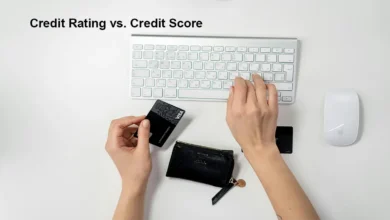Top Strategies to Pay Off Credit Card Debt Faster

Are you one of the nearly 50% of Americans who carries a credit card balance? If so, you’re not alone! With the average credit card debt reaching a staggering $7,321 in early 2025, it’s no wonder many are feeling the weight of financial burdens. And with inflation pushing the total credit card debt in the U.S. to a record high of $1.182 trillion, it’s clear that getting ahead can feel like an uphill battle. But guess what? You have the power to take control! Let’s dive into some actionable strategies to pay off that debt and reclaim your financial freedom!
Why Paying Off Credit Card Debt is Essential
Credit cards can be incredibly useful tools for building credit and earning perks—when used wisely. However, when you’re stuck paying high-interest rates (with average APRs soaring above 24%), those benefits quickly fade away. Instead of being a tool for empowerment, credit cards can turn into traps that drain your wallet. If you’re tired of making payments without seeing your balance budge, it’s time to tackle that debt head-on!
5 Key Ways to Pay Off Credit Card Debt
Credit card debt can feel like an insurmountable burden, but with the right strategies in place, you can regain control of your finances and work towards a debt-free future. Before diving into repayment strategies, it’s crucial to pause credit card usage until you can manage them responsibly. This means ensuring that you have no other significant debts (besides a mortgage or student loans), an emergency fund of three to six months’ worth of expenses, and the ability to pay your balance in full each month. If you’re ready to tackle your credit card debt, here are five effective methods to consider.
1. The Debt Avalanche Method
Managing debt can often feel overwhelming, especially when it appears as a looming mountain of financial obligation. However, instead of viewing your debt in its entirety, a more effective strategy is to tackle it bit by bit. By breaking your debt down into manageable chunks, you not only set yourself up for quicker wins but also maintain motivation throughout the repayment process. There are two popular methods for breaking down debt repayments: the debt avalanche and the debt snowball methods.
A. The Debt Avalanche Method
The debt avalanche method is a systematic approach that prioritizes your debts based on interest rates. To implement this strategy, begin by listing all your credit card debts from the highest interest rate to the lowest. Once you have this list, focus on making minimum payments on each of your accounts while allocating any extra income toward the highest-interest card.
This method is particularly effective because it minimizes the amount of interest you pay over time. As you pay off the highest-interest debt first, you free up additional funds that can then be directed toward the next highest interest rate card. This creates a snowball effect—once one card is paid off, you’ll have more resources to apply toward eliminating subsequent debts. Ultimately, you’ll clear all your debts efficiently and with less cost in interest payments.
B. The Debt Snowball Method
In contrast to the avalanche method, the debt snowball focuses on paying off debts from smallest to largest, regardless of interest rates. This technique emphasizes psychological wins rather than just financial efficiency. By starting with smaller debts, you can quickly eliminate them and gain a sense of accomplishment that fuels further action.
To use this method, list your debts from smallest to largest and make minimum payments on all but the smallest one. Direct any extra funds toward paying off that smallest debt first. Once it’s eliminated, redirect those funds toward the next smallest debt, and continue this pattern until all your debts are cleared.
Many people find that this method helps them stay motivated because they experience quick victories along their repayment journey. Even though it may not save as much in interest compared to the avalanche method, its psychological benefits can be invaluable in fostering a proactive approach to managing finances.
Choosing the Right Method for You
Both methods have their merits; choosing between them largely depends on your personal preferences and financial situation. If you’re motivated by saving money on interest and prefer a more analytical approach, then the debt avalanche may be your best choice. On the other hand, if gaining momentum through small wins resonates with you more effectively, consider adopting the debt snowball method.
It’s also important to remember that these methods aren’t mutually exclusive; some individuals find success in combining elements of both strategies tailored to their specific circumstances.
2. The Debt Snowball Method
The Debt Snowball Method involves organizing your debts from the smallest balance to the largest, irrespective of their interest rates. By focusing on paying off the smallest debt first while maintaining minimum payments on all others, you create a sense of achievement that can motivate you to continue tackling your larger debts.
How It Works
- List Your Debts: Start by listing all your debts from smallest to largest balance.
- Make Minimum Payments: Continue making at least the minimum payments on all your debts.
- Focus Extra Funds on Smallest Debt: Allocate any extra income or funds to pay off the smallest balance.
- Celebrate Wins: Once the smallest debt is paid off, move on to the next one, applying what you were paying towards that debt to the next smallest one.
For example, consider four credit cards with varying balances and interest rates:
- Card 1: $654 with 0% interest
- Card 2: $5,054 with 15% interest
- Card 3: $2,541 with 23% interest
- Card 4: $945 with 17% interest
Using the Debt Snowball Method, you would prioritize paying off Card 1 first due to its smaller balance. Once it’s cleared, you would apply those payments toward Card 4, followed by Cards 3 and then 2.
3. The Balance Transfer
A balance transfer involves moving the outstanding balance from a high-interest credit card to one that offers lower or even 0% interest for a promotional period. This strategic maneuver allows borrowers to save significantly on interest charges, making it easier to pay down existing debt more efficiently. Many balance transfer credit cards provide an introductory offer that lasts anywhere from six months to as long as 21 months, during which no interest accrues on the transferred amount.
While most balance transfer cards include a fee ranging from 3% to 5% of the transferred amount, it is possible to find options with no fees at all. By carefully selecting the right card, borrowers can maximize their savings and reduce their financial stress.
The Benefits of Using a Balance Transfer Card
- Interest Savings: The most immediate benefit of a balance transfer is the potential for significant savings on interest payments. With rates often exceeding 20% on traditional credit cards, moving your debt to a card with 0% APR can free up funds that would otherwise go towards interest.
- Streamlined Payments: Consolidating multiple debts into one payment simplifies your financial management. Instead of juggling several due dates and amounts, you can focus on one card with potentially lower monthly payments.
- Improved Credit Utilization: Utilizing a balance transfer can positively impact your credit utilization ratio—the percentage of your available credit that you are currently using. By lowering your balances on high-interest cards, you may improve your overall credit score in the long term.
- Motivation to Pay Off Debt: The time-limited nature of promotional 0% APR offers can serve as motivation to develop disciplined repayment habits. Knowing that you have a finite window in which to pay off your debt without accruing interest encourages many borrowers to prioritize their payments effectively.
Balance transfers are ideal for individuals who possess good to excellent credit and have the means to pay off their transferred balances within the promotional period—typically one year or less. If you’re facing high-interest debt but believe you can manage your finances wisely during this timeframe, then a balance transfer might be an appropriate solution for you.
However, it’s essential to assess your spending habits and ensure that transferring your balance won’t lead you into further debt accumulation on new purchases. Responsible use of credit is crucial; otherwise, you risk falling back into the same financial pitfalls.
4. Take Out a Loan
One viable solution for those struggling with multiple debts is to consider taking out a loan for debt consolidation or refinancing. By securing a loan with a lower interest rate, you may not only simplify your financial obligations but also save thousands of dollars in interest payments over time.
Debt consolidation involves combining multiple debts into a single loan, which can make repayment more manageable. When you take out a loan with a lower interest rate, you can pay off higher-interest credit cards and potentially reduce your overall interest payments. This strategy is particularly appealing if you’re currently facing financial challenges and have limited funds to allocate toward paying off debt.
A. Personal Loans
Personal loans are an accessible option for many borrowers looking to consolidate their debts. Online marketplaces allow you to prequalify for a personal loan without impacting your credit score, enabling you to compare different offers without the pressure of a hard inquiry. If you have decent credit and are able to adhere to a structured repayment plan, a personal debt consolidation loan could be an excellent choice.
Unlike credit cards that offer revolving credit—allowing you to borrow continuously while only making minimum payments—debt consolidation loans come with fixed repayment schedules. This means that you will have clear timelines for when your debt will be paid off, which can provide peace of mind.
For those interested in exploring personal loans, platforms like AmOne offer competitive terms. With a credit score of at least 620, you may qualify for up to $100,000 at fixed rates starting at 6.40%, with terms ranging from 12 to 84 months. Other reputable companies include Credible and MoneyLion; be sure to review our rundown on the best debt consolidation loans for further insights.
B. Home Equity Loans
For homeowners with substantial equity in their property, home equity loans present another avenue for borrowing against the value of your home. There are three primary ways to access this equity: home equity loans, home equity lines of credit (HELOCs), and cash-out refinancing.
- Home Equity Loan: This option provides you with a lump sum amount upfront that you repay at a fixed interest rate over a predetermined period.
- Home Equity Line of Credit (HELOC): Unlike a traditional loan, HELOCs offer flexibility by allowing you to borrow against an established limit as needed.
- Cash-Out Refinance: This method involves refinancing your existing mortgage for more than what you owe and taking the difference in cash.
While these options typically feature lower interest rates than unsecured personal loans, they carry significant risks since your home serves as collateral. It’s crucial to ensure that any loan taken against your home is manageable within your budget.
5. Debt Settlement
Debt settlement is a negotiation process where a debtor attempts to reach an agreement with creditors to pay off a portion of their outstanding debts for less than the full amount owed. This option can be appealing for individuals overwhelmed by their financial obligations, as it allows them to resolve their debts in a more manageable way.
Typically, debt settlement can be pursued directly by the debtor or through professional debt settlement companies. While negotiating directly may save you fees associated with third-party services, it can also be challenging without expertise in handling such discussions. Professional services may offer valuable experience and strategies but often come with costs that should be weighed against potential savings.
When Should You Consider Debt Settlement?
Debt settlement may not be suitable for everyone; understanding when to consider this option is vital. Here are some scenarios where debt settlement might be appropriate:
- Overwhelming Debt: If you find yourself struggling with multiple debts that exceed your ability to repay, settling could provide a viable path toward financial recovery.
- Unsecured Debt: Since most credit card debts are unsecured, creditors may be more willing to negotiate since they cannot reclaim physical assets.
- Threatening Collection Practices: If you are being harassed by creditors or receiving constant calls from collection agencies, exploring debt settlement might alleviate some pressure.
- Desire for Quick Resolution: For those looking for an expedited method to resolve debts without long-term implications on credit scores, settling may serve as an effective solution.
The Process of Debt Settlement
The journey toward debt settlement typically unfolds in several stages:
- Assessment of Financial Situation: Begin by evaluating your total debts, income, and expenses to determine if you can feasibly negotiate settlements.
- Researching Creditors: Understand which creditors you owe money to and gather any relevant documentation regarding your debts.
- Negotiation Phase: Contact your creditors directly or work with a professional service to negotiate lower payments. Be prepared for back-and-forth discussions and ensure that any agreements made are documented properly.
- Finalizing Agreements: Once terms have been reached, ensure that all settlements are confirmed in writing before making any payments.
- Monitoring Your Credit Report: After settling debts, continue monitoring your credit report for accuracy regarding how settled accounts are reported.
Potential Risks and Considerations
While debt settlement offers numerous benefits, it’s important to remain aware of potential risks involved:
- Impact on Credit Score: Settling debts can negatively affect your credit score as accounts marked as “settled” still indicate that full payments were not made.
- Tax Implications: In some cases, forgiven debt amounts may be considered taxable income by the IRS.
- Future Borrowing Challenges: Creditors may view settled accounts unfavorably when considering future loan applications.
Before proceeding with debt settlement, weigh these risks against your current financial situation and long-term goals.
Conclusion
Paying off credit card debt requires patience and discipline but is entirely achievable with proper planning and execution. Whether you choose the Debt Avalanche or Snowball methods, explore balance transfers or loans, or consider settlement options, it’s vital to select a strategy that aligns with your financial situation and personal preferences.
Start today by assessing how much credit card debt you have and evaluating which method suits you best — it’s never too late to take control of your financial future! If you’re feeling overwhelmed by debt or unsure where to start, consider consulting with a financial advisor who can guide you through these options tailored specifically for your needs. Best regards, Finance Mate Club





